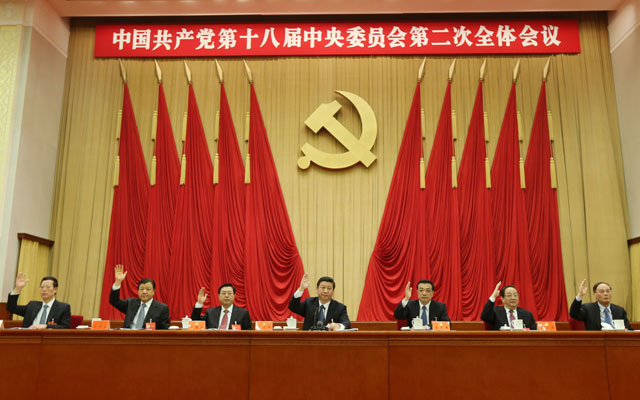Trying to “Contain” China Makes No Sense. So What’s the Right Strategy?
James Carafano /
In 1962, the Beatles auditioned for Decca Records. Pope John XXIII excommunicated Fidel Castro. And China invaded India. More than 2,000 died in the harsh mountain combat.
A self-declared “non-aligned” power, India never expected to be attacked by a Cold War protagonist. Unprepared, New Delhi threw ground troops into the fight, but hesitated to deploy its air force out of fear of “escalating” the conflict. The Indian prime minister turned to the United States for military aid, but since the two nations had been at arm’s length for years, Washington was hardly prepared to respond. Luckily for New Delhi, the humiliating incident ended with a cease-fire.
The lesson to be taken from the 1962 Sino-Indian War is that nations shouldn’t wait for events to spin out of control before responding. Instead, like-minded powers ought to work proactively to keep the peace.
It’s a timely lesson because Beijing and New Delhi are once again at odds. A recent poll found China now tops Pakistan as the country Indians trust least. Other Asian nations share the Indians’ concern. South Korea, Japan, Taiwan, the Philippines and Australia have all raised red flags over China’s recent behavior: rewriting “international norms”; pressing unreasonable territorial claims; acting badly in cyberspace and more.
This presents a tremendous opportunity for a collaborative approach to keeping the peace. All these nations — and the United States — have long shared a broadly common approach to economic, political and security issues. Now they share a common concern: China. In foreign affairs, the combination of shared values and shared concerns makes for a “beautiful friendship.”
A coalition of democracies is therefore all but inevitable. But what will be the mission of the coalition and what will it do?
What it can’t do is implement a “containment” strategy for China. Trying to contain a major power makes no sense. We never “contained” the Soviet Union. In reality, our Cold War strategy was to outlast the Soviets and protect our allies.
So what is the right strategy? Each member of the coalition will have a different set of issues with Beijing, so it’s important that each commit to support the security, economic, political and human rights causes of one another in any dust-up with China. Otherwise, Beijing will be able to press in one direction without feeling pressure from another — a tactic that succeeds in dividing allies. Instead, China should find that the path of least resistance requires cooperation, reasonable behavior, and reforms that promote economic freedom.
So, how should these nations go about forming a Pacific version of Mr. Rogers’ Neighborhood?
This partnership will have to be formed bilaterally, nation to nation. It won’t look like a hub-and-spoke affair with Washington in the middle.
And cooperation will have to extend beyond just security and territorial rights. While defense will be the paramount issue, the partners will also have to engage on the economy and human rights, at the very least pressing for greater transparency from Beijing on these issues.
The time may well be right for new partnerships in Asia. Both the incoming Australian and Japanese governments have proven themselves very pro-U.S., and America’s stock in the Philippines has never been higher. If next year’s Indian elections produce a BJP-led government, it’s likely to be open to bold, new foreign policy ideas. Meanwhile, the Obama administration is at least rhetorically committed to a pivot to Asia.
This emerging friendship among like-minded nations could be a winner for everyone in Asia, China not the least. A coalition of democracies committed to peace, prosperity and the flourishing of freedom could generate a tide that would lift all countries on the South China Sea.
Originally appeared in the Washington Examiner

